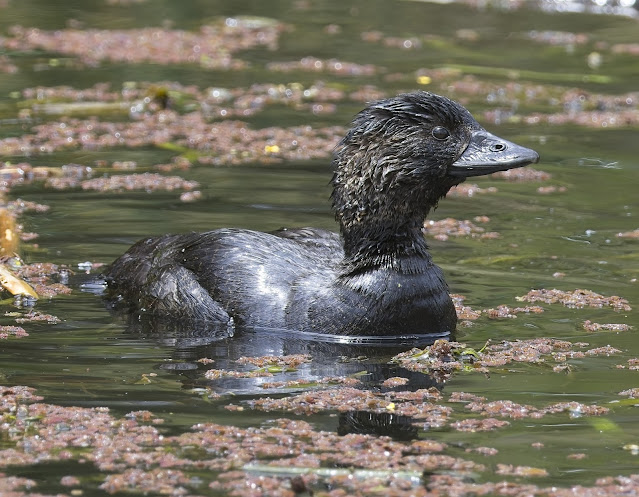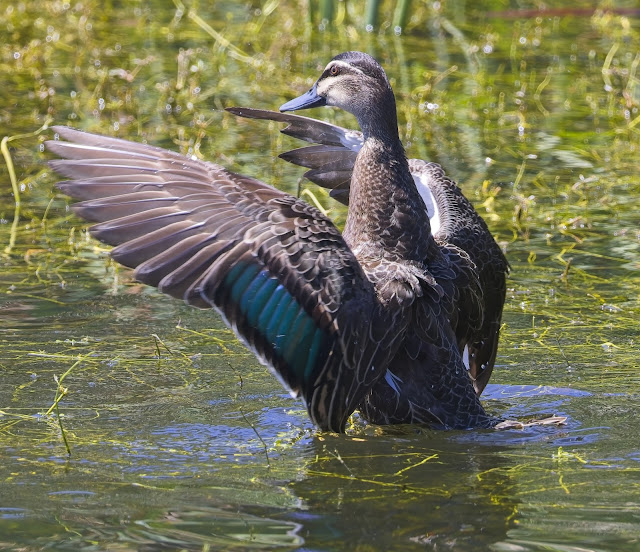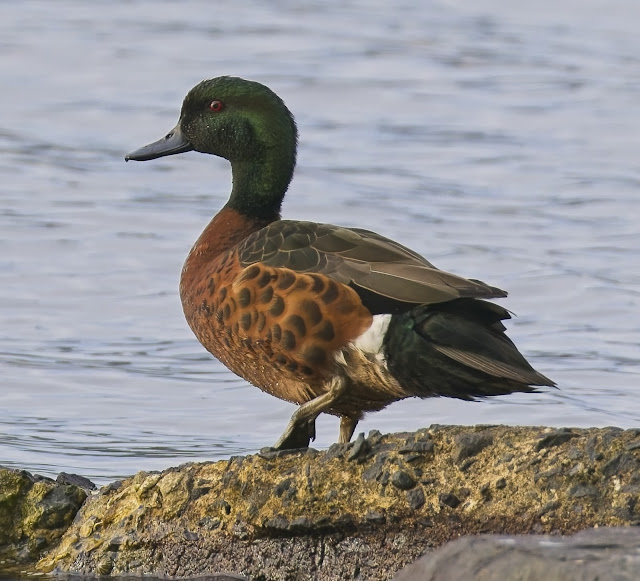Australian Waterfowl, Oct 2024
We were lucky enough to be able to take a family holiday in New Zealand, Tasmania and Western Australia in Oct and early Nov 2024. Birding was very much a secondary activity but I took the camera, so pictures were inevitable! Waterfowl were not a priority for me, but, when seen, many of them were 'lifers'.
The Musk Duck (Biziura lobata) is a unique,
large diving duck native to Australia, found in freshwater lakes, swamps, and
wetlands. Known for its musky oduor during breeding season, males have a
distinctive leathery lobe under their bill. They are excellent swimmers and
feed on aquatic invertebrates, plants, and small animals. Musk Ducks are
solitary and secretive, often spotted gliding low in the water.
The Pink-eared Duck (Malacorhynchus membranaceus) is a small, unique waterfowl native to Australia, named for the small pink patch near its ear. Its striking features include zebra-like black-and-white stripes and a distinctive spatula-shaped bill. Found in shallow freshwater wetlands, it feeds by filtering small invertebrates and algae through its bill. Pink-eared Ducks are highly nomadic, moving in response to water availability, and are often seen in large flocks
The Maned Duck (Chenonetta jubata), also known as the Australian Wood Duck, is a common waterfowl in Australia. It is easily recognized by its unique mane-like feathers on the male's head and its mottled brown and grey plumage. Found near water bodies, open grasslands, and urban parks, they feed mainly on grasses and seeds. Unlike many ducks, they often perch in trees and nest in tree hollows. Social and adaptable, Maned Ducks are a familiar sight across much of the country.
The Blue-billed Duck (Oxyura australis) is a
small, shy waterbird native to Australia, known for the male's striking bright
blue bill during the breeding season. Found in deep freshwater lakes and
wetlands, these diving ducks feed on aquatic plants, seeds, and invertebrates.
They are predominantly sedentary but may move in response to water
availability. Secretive in nature, they often remain hidden among dense
vegetation. The Blue-billed Duck is considered near-threatened due to habitat
loss and changes in water quality.
The Black Swan (Cygnus atratus) is an iconic
waterbird native to Australia, easily recognized by its striking black plumage,
red bill, and white wing tips visible in flight. Found in wetlands, lakes, and
rivers, it feeds on aquatic vegetation. Black Swans are monogamous, often
forming lifelong pair bonds, and build large nests near water
The Pacific Black Duck (Anas superciliosa) is
a common waterfowl species found across Australia in freshwater lakes, rivers,
wetlands, and coastal estuaries. Recognizable by its dark brown plumage and
distinctive pale facial stripes, it is an adaptable forager, feeding on aquatic
plants, seeds, and small invertebrates. These ducks are known for their gentle
quacks and social behavior, often seen in pairs or small groups.
The hoary-headed grebe (Poliocephalus poliocephalus) is a small freshwater bird native to Australia. Recognizable by its silvery-white head streaked with dark feathers, it inhabits inland water bodies like lakes, dams, and wetlands. These grebes are expert divers, feeding mainly on small fish, insects, and aquatic invertebrates. There was a small group at Lake Thetis. They kept to the middle of the lake and it was a hot day.
The Hardhead (Aythya australis), Australia's
only true diving duck, is found in freshwater lakes, swamps, and reservoirs. It
has a distinctive chestnut-brown plumage, with males showing a white eye and
females a darker one. This one was very distant.














Comments
Post a Comment